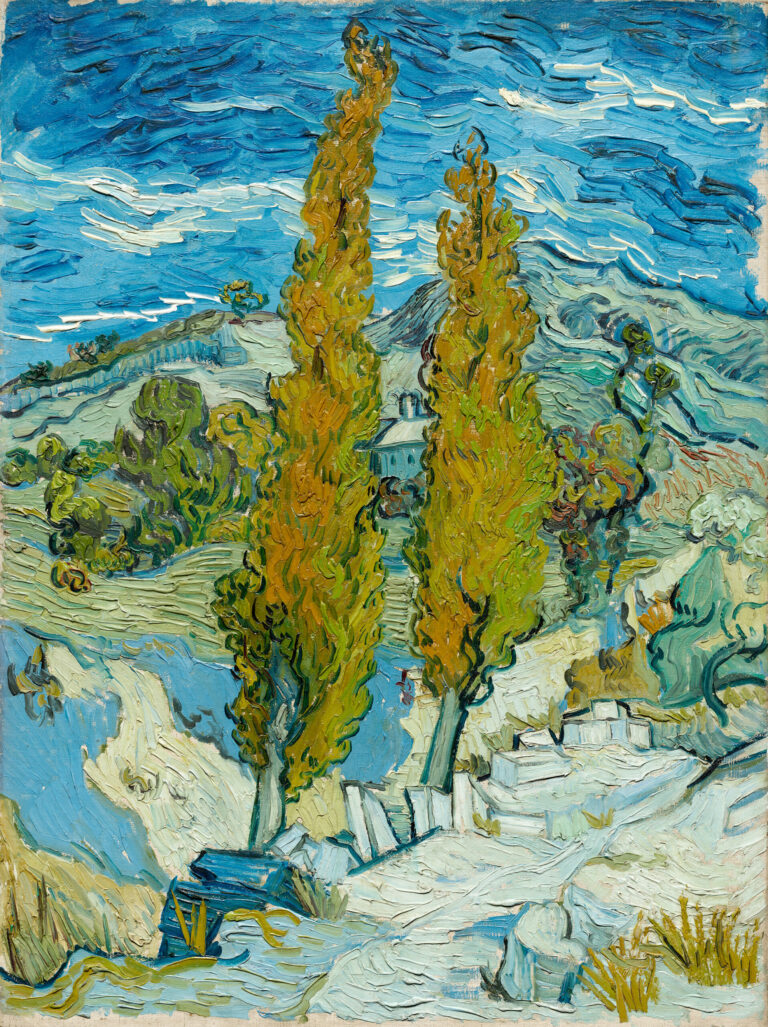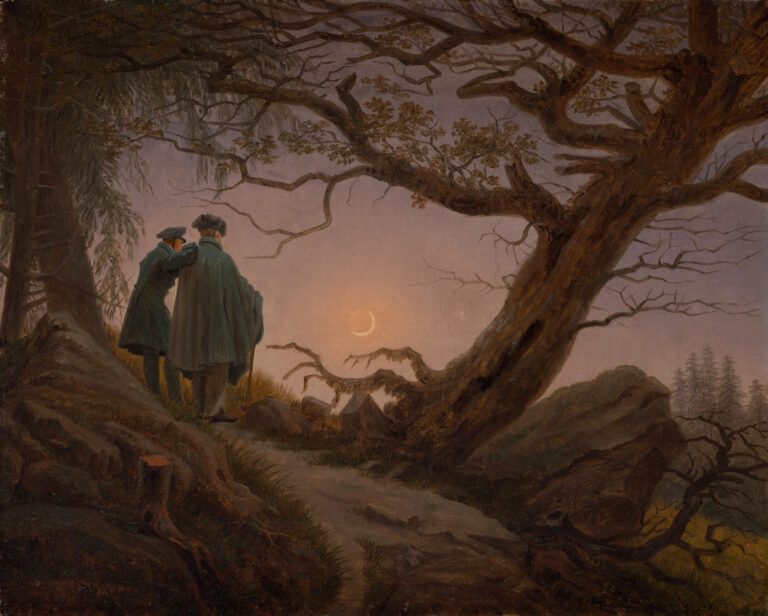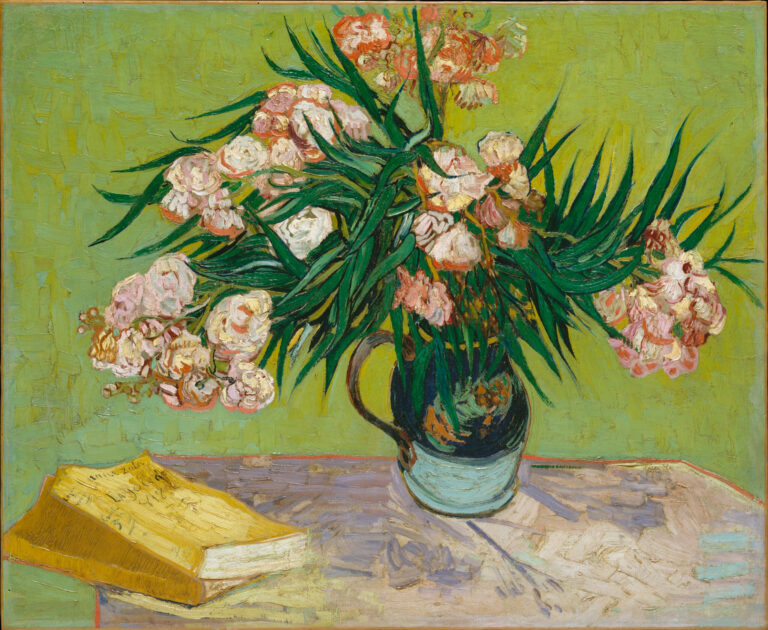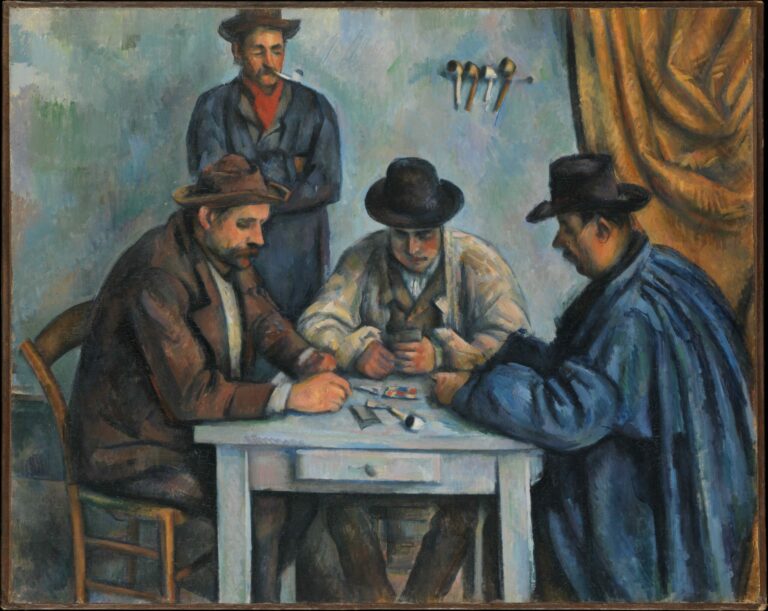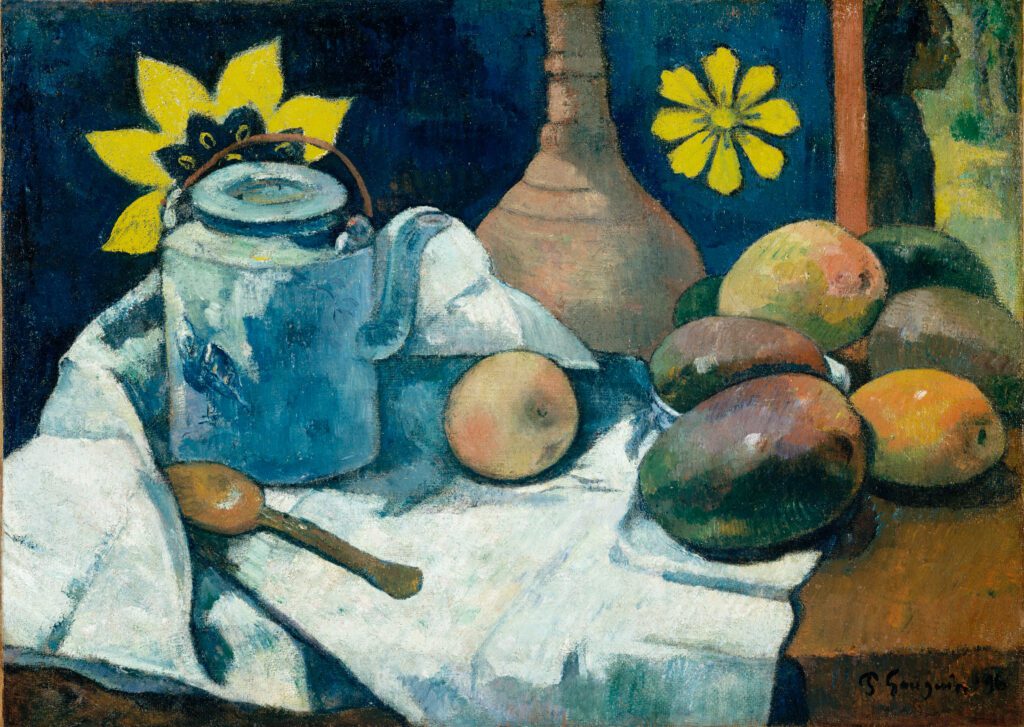
In this 1896 work, Gauguin presents us with a composition where tradition and exoticism engage in dialogue.
The teapot, as the central element, sits with elegance among fruits of warm, vibrant hues – Tahitian mangoes replacing Cézannesque apples. The artist brilliantly plays with perspective, creating a visual tension that energizes the compressed space of the canvas. The human silhouette, glimpsed fleetingly in the upper right corner, introduces an enigmatic narrative element, like a silent witness to this still life that transcends the genre. The assertive contours, the palette of saturated tones, and the deliberately flattened spatial construction testify to Gauguin’s Synthetist approach, which privileges emotional expression over faithful representation of reality. This work perfectly embodies the creative tension between European influences and Polynesian imagery that characterizes his Tahitian period.
Further details:
- Still Life with Teapot and Fruit, by Paul Gauguin, 1896
- 47.6 x 66 cm
- The Metropolitan Museum of Art, Fifth Avenue, New York, exhibited in gallery 822
- https://www.metmuseum.org/art/collection/search/437999
Paul Gauguin (1848-1903) is an emblematic figure of Post-Impressionism. After collaborations with the Impressionists and a decisive period in Pont-Aven, he left France for Tahiti in 1891, in search of a more “primitive” and authentic art. This 1896 work belongs to his second Tahitian period, marked by increasing financial difficulties. A great admirer of Cézanne, Gauguin owned one of his still lifes that he particularly cherished, but which poverty would force him to sell the following year. This dialogue with Cézanne reveals Gauguin’s ambivalence, torn between his attachment to the European pictorial tradition and his search for a new visual language, nourished by his Polynesian experience.

